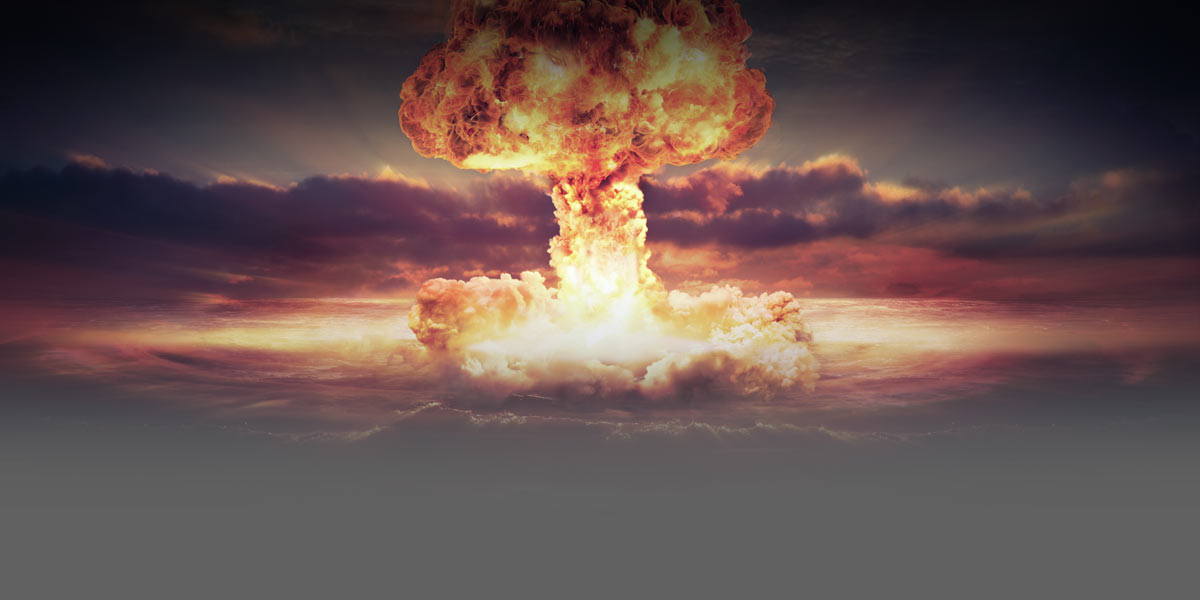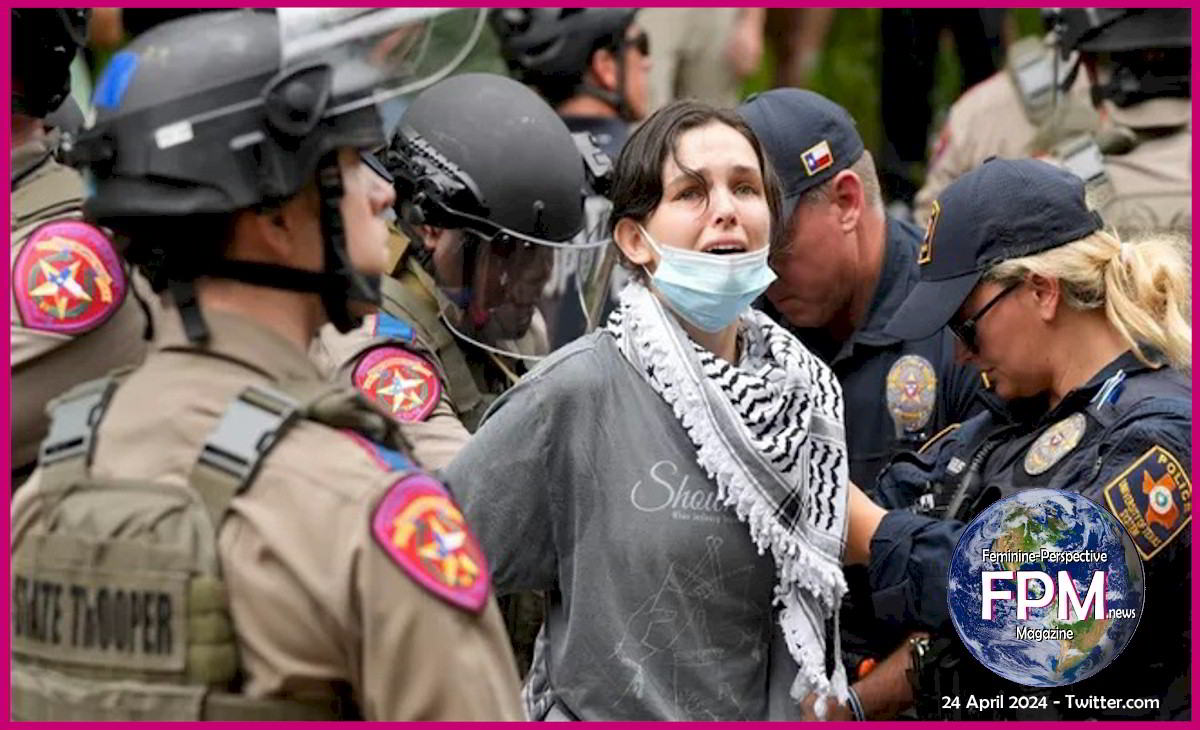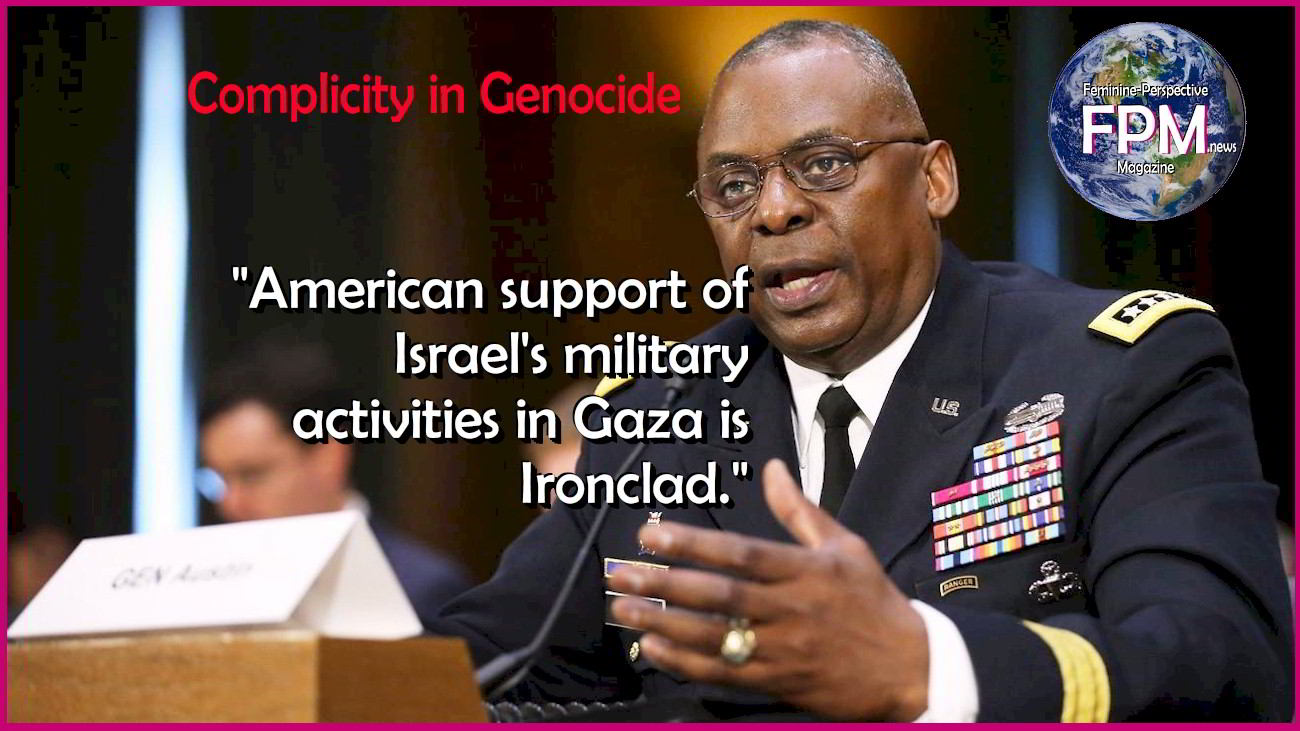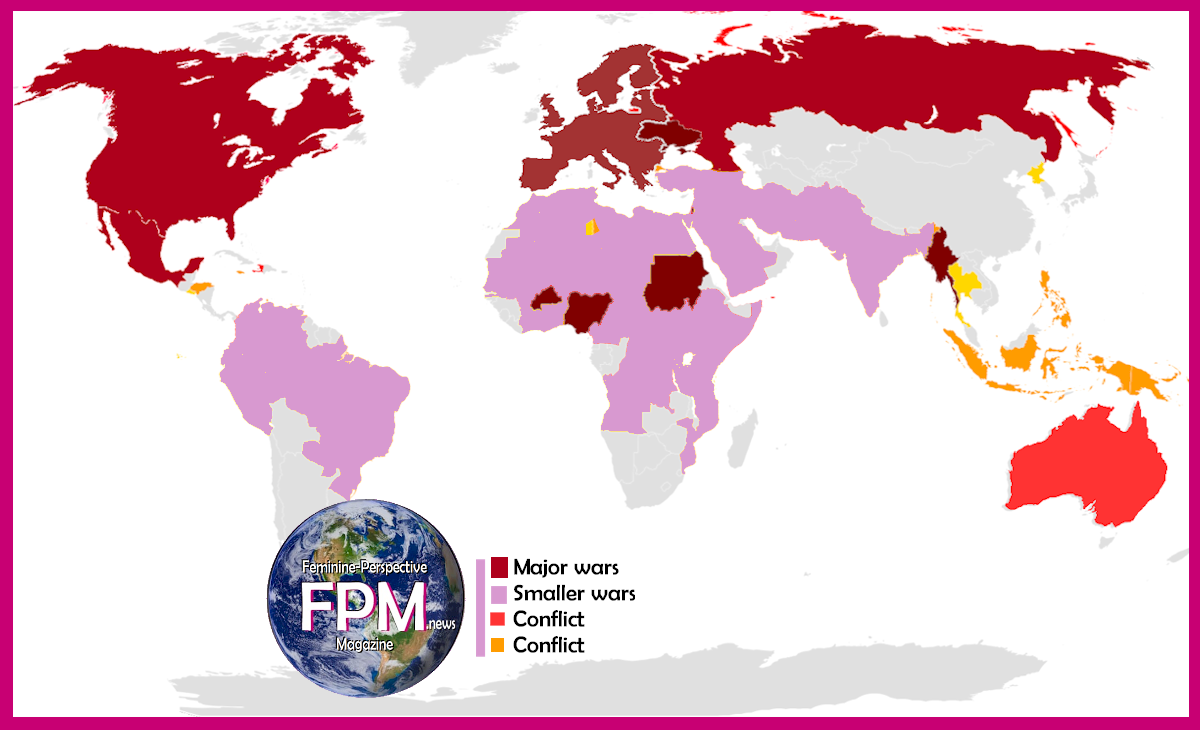Women and girls tend to be less drawn to war news and military jargon but after repeated threats of nuclear war in Europe women are only now getting caught up in the terror of war and learning of the eastern Europe threat to global security.
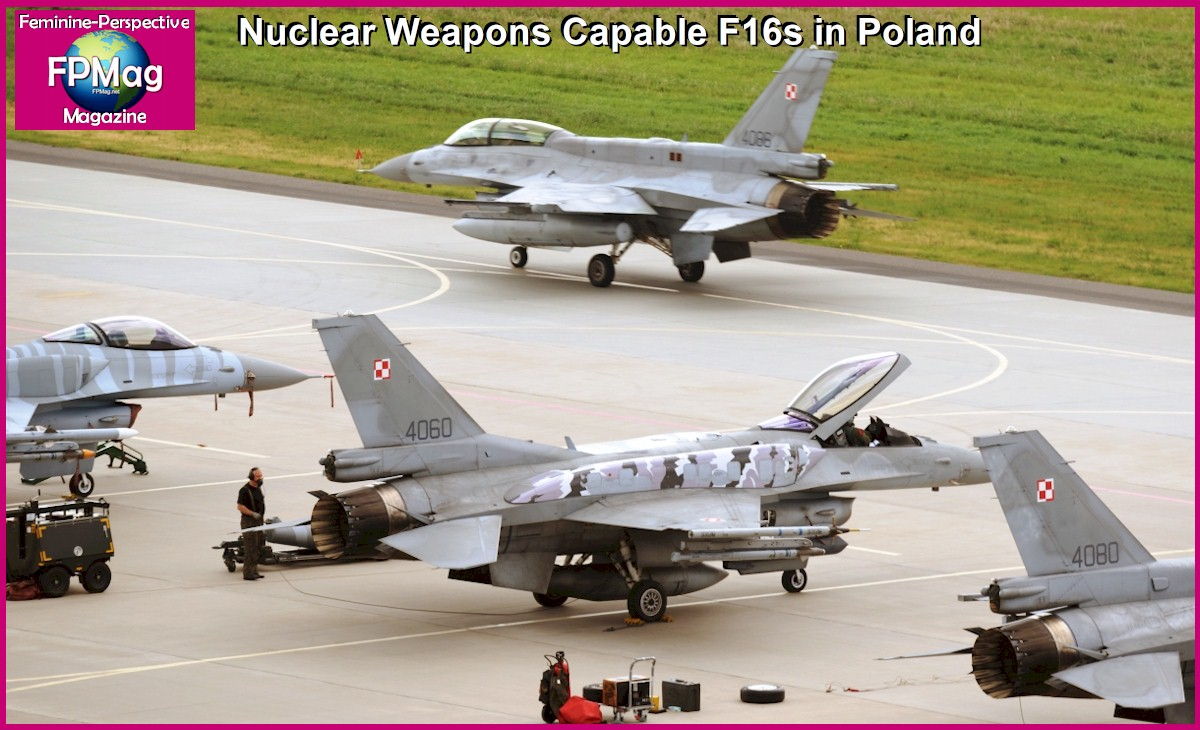 NATO /USA Forces building up to a crescendo level in Poland to fight a war with Russia in Ukraine. F16s shown here in Poland during a 2015 NATO exercise are capable of carrying banned nuclear weapons and cluster munitions, which has the Russian side of the NATO/USA proxy war, talking hard. U.S. Air Force photo by Senior Master Sgt. Wesley Fleming
NATO /USA Forces building up to a crescendo level in Poland to fight a war with Russia in Ukraine. F16s shown here in Poland during a 2015 NATO exercise are capable of carrying banned nuclear weapons and cluster munitions, which has the Russian side of the NATO/USA proxy war, talking hard. U.S. Air Force photo by Senior Master Sgt. Wesley Fleming
Background: “Europe is at war”, by Dale Carter, Security Director, The RINJ Foundation.
Life brings roles to women like childbirth, breastfeeding & childcare that contraindicate jingoism and war. Now it is time to pay attention.
For staff and volunteers of The RINJ Foundation, war zones is where you will find them providing women’s shelters, birthing clinics and health care. Why? Because otherwise, women and children are barely an afterthought in the patriarchy’s wars. Services, food, water, cooking fuel become rarities for women and babies.
So now that war-induced food costs and food shortages around the world women’s attention is demanded bi dire needs as millions of people are sent into hunger. The NATO / Russia war in Europe has already begun starving millions of people as the world’s breadbasket is emptied by the rich countries and the poor go hungry.
Europe is presently threatened with the fear of at least one nuclear power plant being scrammed or bombed to the point of becoming a massive dirty bomb that kills everyone and every creature in its path.
Following the NATO summit in Vilnius, Lithuania, Russia has reacted to the threats against its existence. “We must keep in mind that one of the modifications of the F-16 can ‘accommodate’ nuclear weapons,” Russia’s Foreign Minister Lavrov said in a speech at a military base in Dushanbe in Tajikistan early this month.
“The influx of American-made F-16s in Ukraine will be considered by Russia as a nuclear threat from the West,” said Mr, Lavrov today. The Russian military “will not sort out whether each specific aircraft is equipped for the delivery of nuclear weapons or not, we will assume all are nuclear capable.
“Canada and the USA are training Ukrainian pilots to fly F16s and drop cluster bombs and nuclear bombs,” according to a Canadian Air Force Major who does not want to be identified as he is not authorized to speak for the NATO war effort.
“Training on all ordinance is part of the curriculum for learning to fly these aircraft and both these weapons [ cluster bombs and nuclear bombs] are part of the F16’s ordinance,” he said.
Ukraine will be getting F16s and Cluster Munitions made by America.
Map below: Growing number of locations since 2012 from which RINJ Foundation humanitarian workers have witnessed and treated survivors of cluster bomb munitions dropped by Ukraine since 2014.

The “don’t bomb us map”. Women’s & kids shelters, birthing clinics and rape treatment clinics. Click image to enlarge.
Human Rights Watch 2014 video of Ukraine using cluster munitions against civilians in Donbass.
Does Sweden joining NATO add to the proxy war in Europe?
By Simon J Smith, Staffordshire University and Jordan Becker, United States Military Academy West Point
Turkey has ended its veto on Sweden joining NATO, thereby removing all the barriers to its membership of the military alliance.
Hungary quickly followed suit and, as a result of the two countries’ support, a consensus was able to be reached at the 2023 NATO summit in Vilnius, Lithuania. Turkish president Recep Tayyip Erdogan agreeing to support Sweden’s bid to join will be touted as one of the key achievements of the summit.
Sweden submitted its formal application for membership in May 2022 alongside Finland, which was admitted into the alliance in April 2023.
Sweden, though not a formal member, has had a very close relationship with NATO for almost 30 years, since joining the alliance’s Partnership for Peace programme in 1994. It has contributed to NATO missions. And as a member of the European Union and contributor to the bloc’s common security and defence policy, it has also worked closely with the vast majority of European NATO allies.
Surrounding the Russian Federation with NATO Weapons
In pursuing NATO membership, both Sweden and Finland have dramatically shifted their traditional policy of military non-alignment. A critical driver of this move was, clearly, Russia’s invasion of Ukraine in February 2022. It is also more evidence that Russian president Vladimir Putin has failed to achieve two of his own strategic objectives: weakening solidarity in the alliance and preventing further NATO enlargement towards Russia’s borders.
Finland and Sweden’s accession is of significant operational importance to how NATO defends allied territory against Russian aggression. Integrating these two nations on its north flank (the Atlantic and European Arctic) will help to solidify plans for defending its Ukraine-adjacent centre (from the Baltic Sea to the Alps). This will ensure that Russia has to contend with powerful and interoperable military forces across its entire western border.
Why Turkey lifted its veto
For a few years now, Turkey’s relationship with NATO has been nuanced and strained. Turkey’s objections to Sweden’s accession were ostensibly connected to its concerns over Sweden’s policy towards the Kurdistan Workers’ Party, or PKK.
Turkey has accused Sweden of hosting Kurdish militants. NATO has acknowledged this as a legitimate security concern and Sweden has made concessions as part of its journey towards NATO.
The main material driver of the agreement, however, may always have been a carrot being dangled by the US. American president Joe Biden now appears to be moving forward with plans to transfer F-16 fighter jets to Turkey – a deal that appears to have been unlocked by Erdogan’s changed stance on Sweden. But it is often the case that a host of surrounding deals and suggestions of deals can help facilitate movement at NATO. Everyone, including Turkey, now seems able to sell the developments as a win to their constituents back home.
The ‘Nordic round’
Sweden’s accession means all Nordic nations are now part of NATO. As well as being significant in operational and military terms, this enlargement has major political, strategic and defence planning implications. Although Finland and Sweden have been “virtual allies” for years, their formal accession means some changes in practice.
Strategically, the two are now free to work seamlessly with the rest of the NATO allies to plan for collective defence. Integrating strategic plans is extremely valuable, particularly considering Finland’s massive border with Russia and Sweden’s possession of critical terrain like the Baltic Sea island of Gotland. This will increase strategic interoperability and coordination.
NATO allies also open their defence planning books to one another in unprecedented ways. Finland and Sweden will now undergo bilateral (with NATO’s international secretariat) and multilateral (with all allies) examinations as part of the NATO defence planning process. They will also contribute to the strategic decisions that undergird that process.
Their defence investments will also be scrutinised (and they will scrutinise the spending of other allies). Initial analysis suggests that while Finland and Sweden have lagged behind their Nordic neighbours’ increases in defence investment since 2014. Finland’s investment in defence leapt significantly leading up to and following its accession to NATO. While we may not know for months if the same is true of Sweden, we may expect similar increases on its part. Alliance norms and peer pressure are powerful.
The expansion of NATO to include Sweden is a major step for all these reasons. But while anyone watching the Vilnius summit will naturally now be asking whether the shift changes the situation for Ukraine’s membership aspirations, an answer is unlikely to be on the near horizon. Any final decision on Ukraine being offered a membership action plan for the time being is a bridge too far, especially in the current context of an ongoing war with an outcome that, as yet, is unpredictable.![]()
By Simon J Smith, Staffordshire University and Jordan Becker, United States Military Academy West Point
This article is republished from The Conversation under a Creative Commons license.

